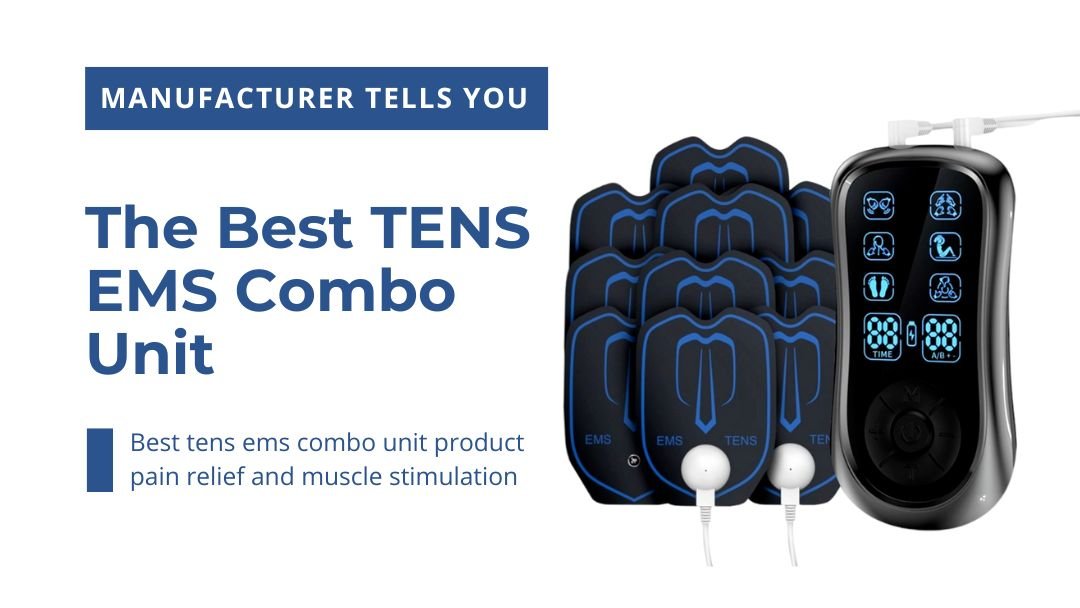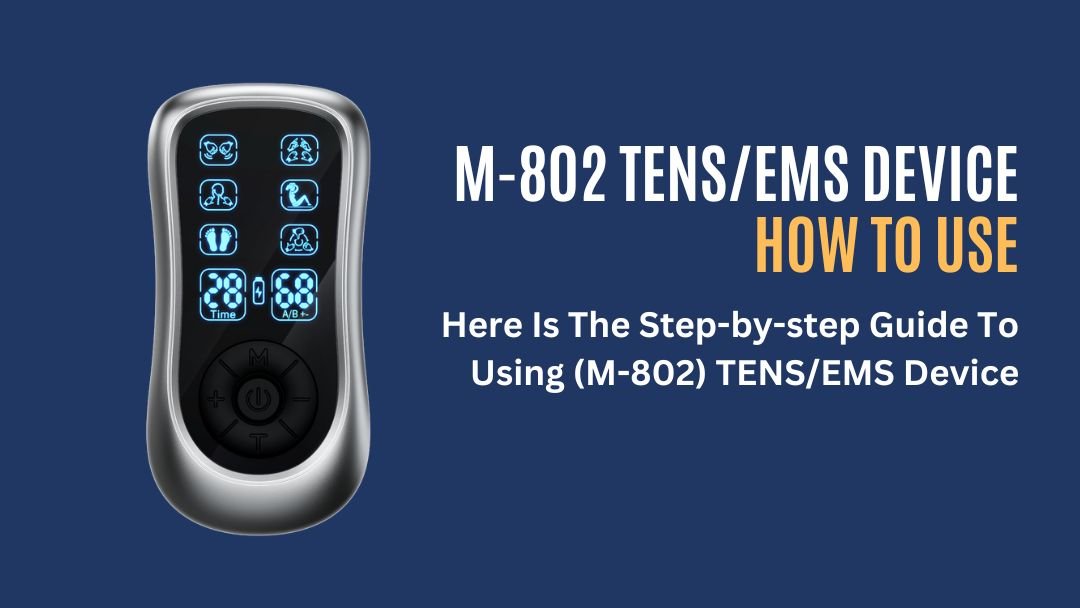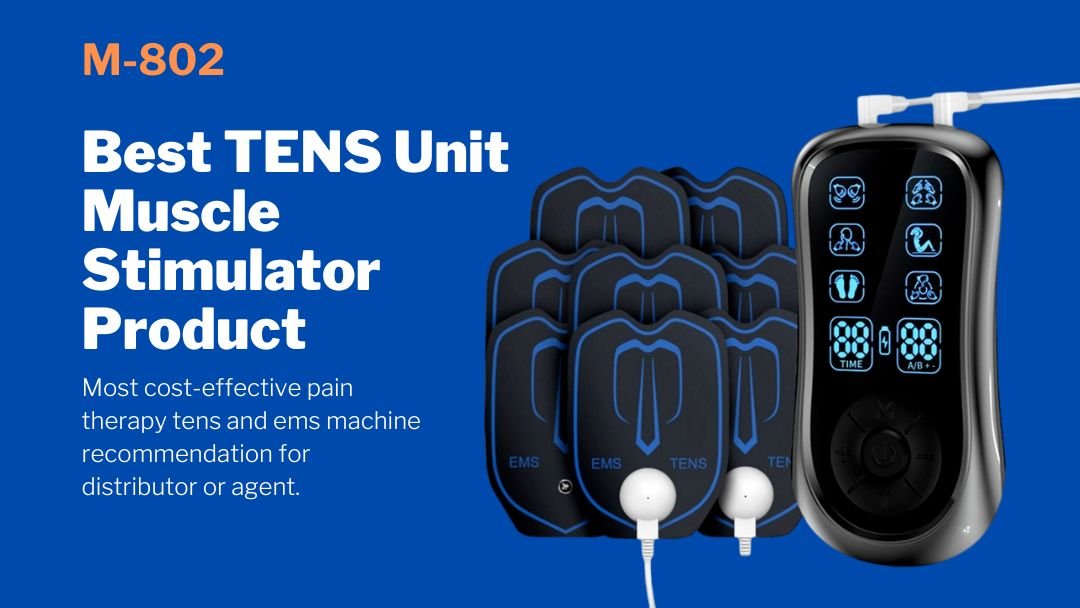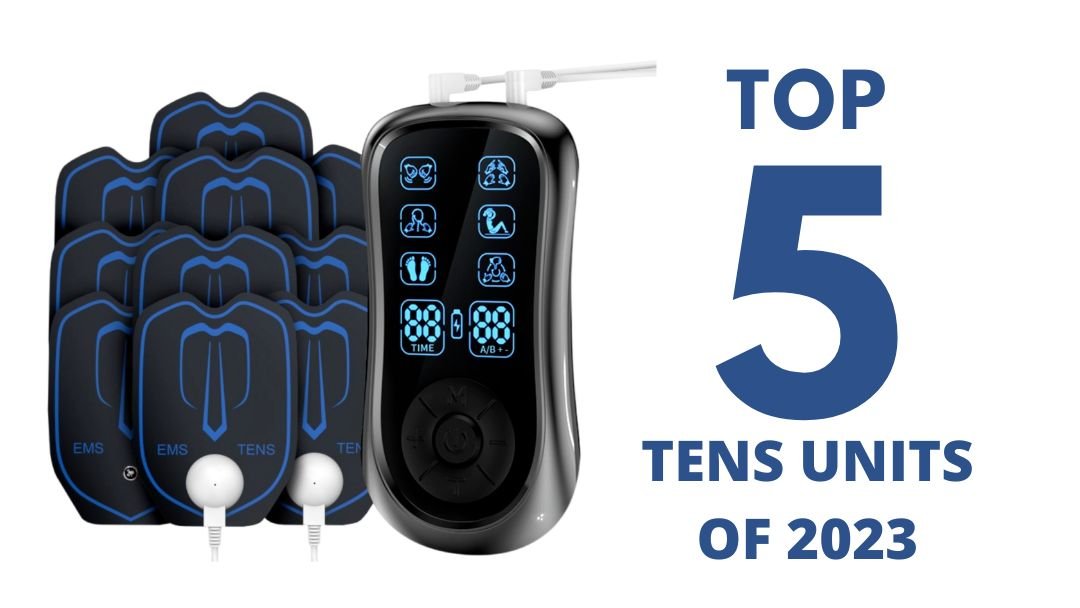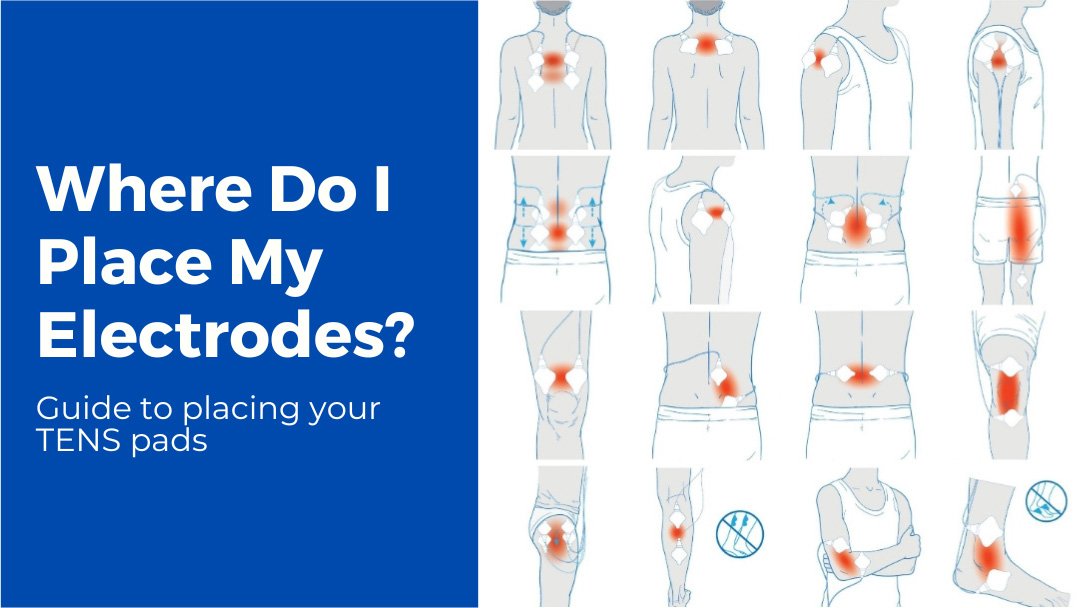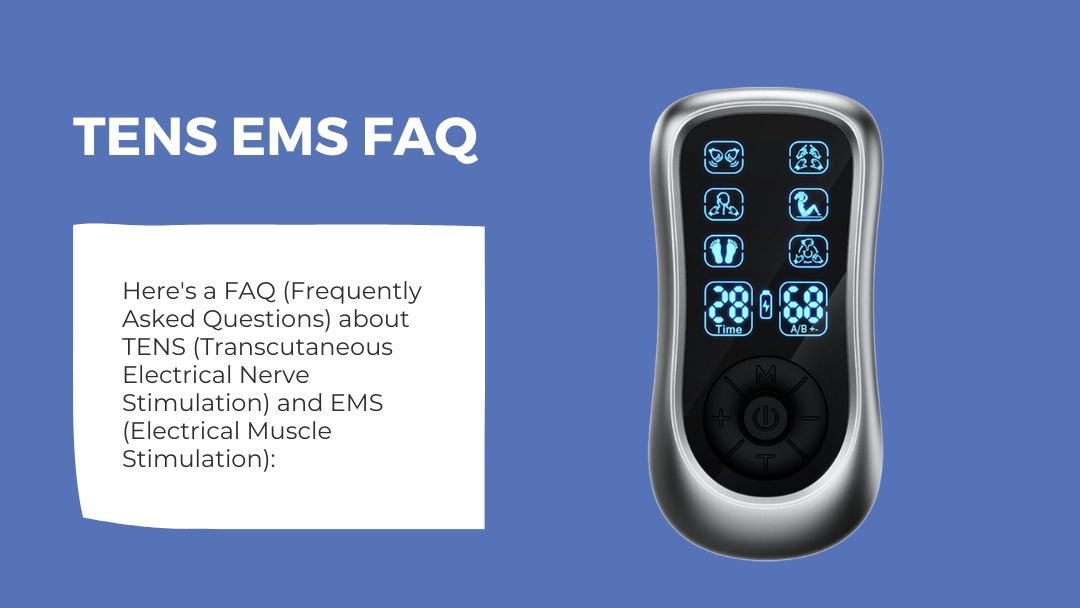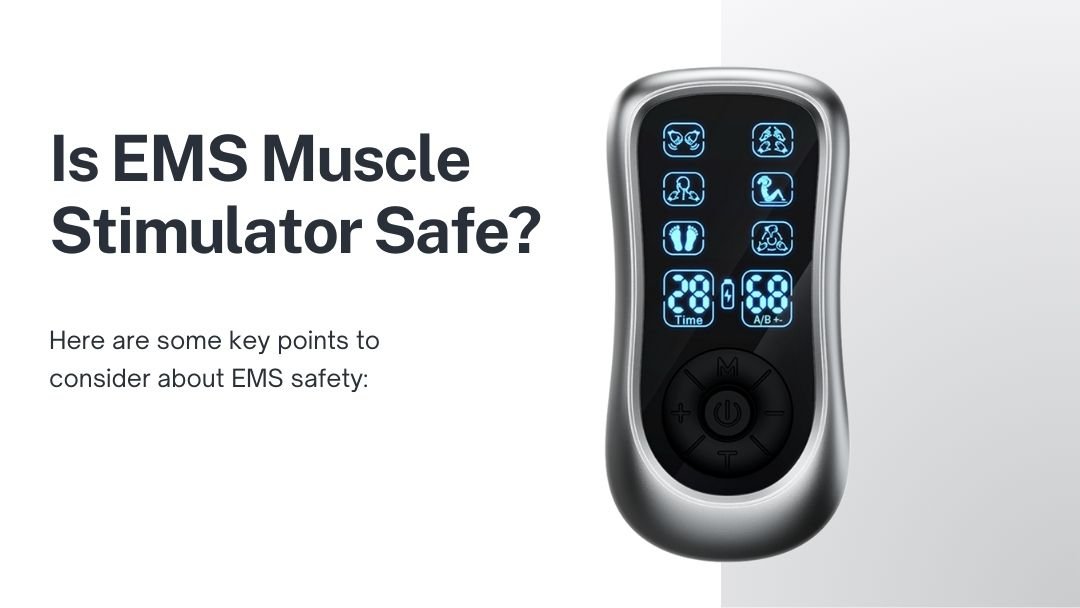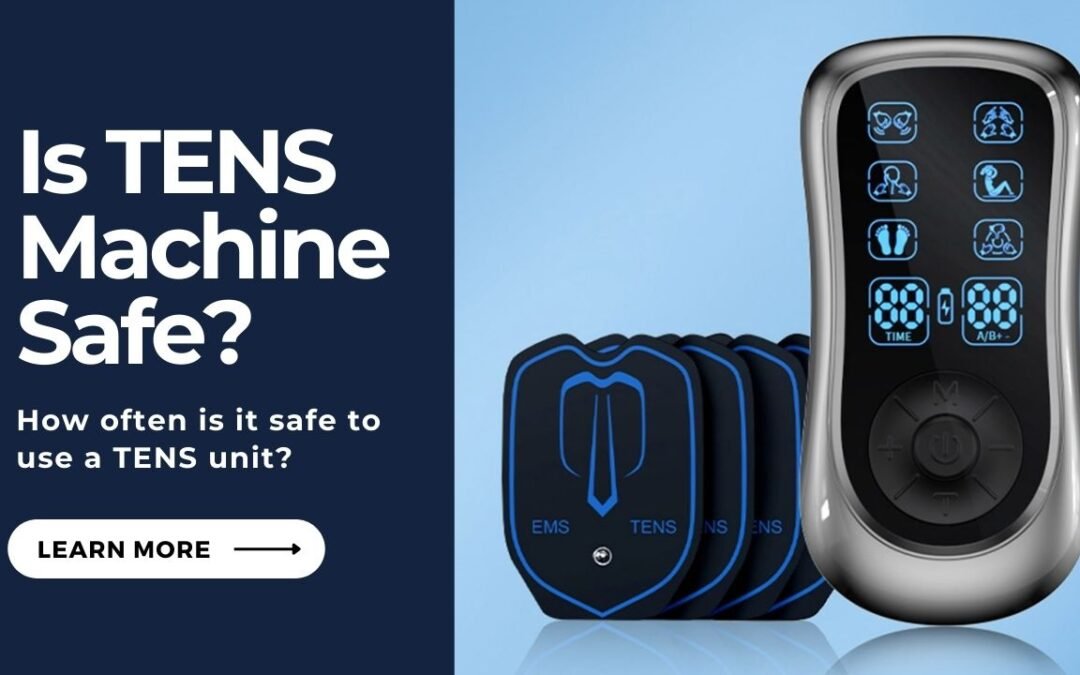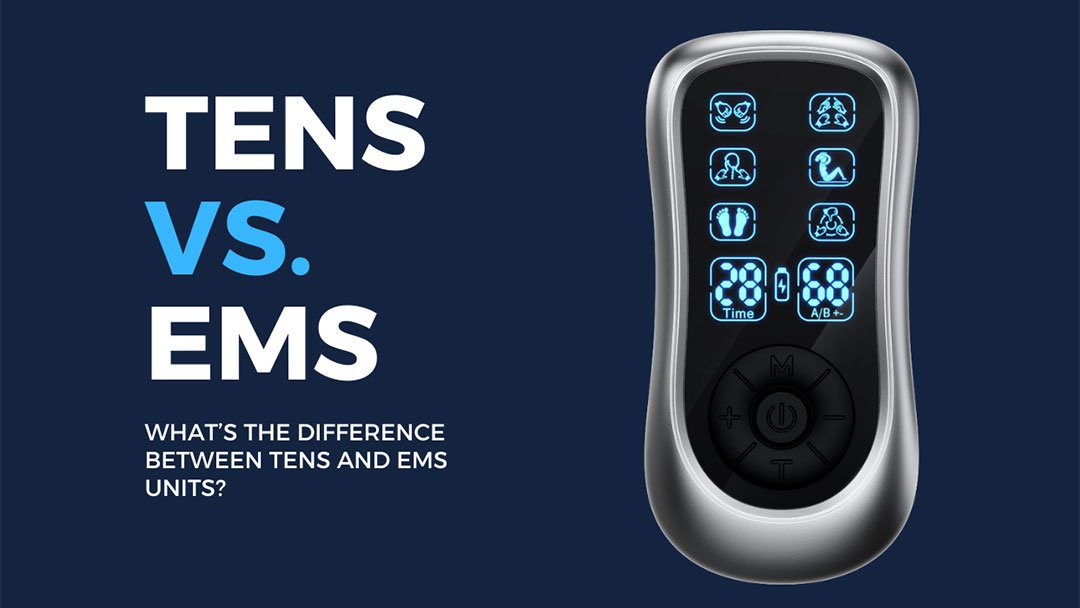As a TENS EMS unit manufacturer with more than 8 years, here we are going to recommend you the best TENS EMS combo unit product for pain relief and muscle stimulation.
Table of Contents
What is TENS?(Definition for TENS)
Transcutaneous Electrical Nerve Stimulation (TENS) is a therapeutic technique that involves using electrical currents to provide pain relief. It is a non-invasive and drug-free method commonly used in physical therapy and pain management. TENS therapy is based on the principle that electrical stimulation of nerves can influence the perception of pain.
The theory behind TENS is that the electrical impulses can interfere with the transmission of pain signals to the brain. When the nerves are stimulated by the electrical current, they can become less sensitive to pain signals, leading to a reduction in pain perception. Additionally, TENS might also stimulate the production of endorphins, which are the body’s natural pain-relieving chemicals.
TENS can be used to treat a variety of pain conditions, including musculoskeletal pain, arthritis pain, nerve pain, and even certain types of chronic pain. It’s generally considered safe and non-invasive. However, its effectiveness can vary from person to person, and it may not work for everyone or for all types of pain.
What is a TENS muscle stimulator? And how does it work?
A TENS muscle stimulator, also known as a TENS unit, stands for Transcutaneous Electrical Nerve Stimulation. It is a medical device that uses electrical currents to provide pain relief by stimulating the nerves through the skin. TENS units are often used as a non-invasive, drug-free method to alleviate various types of pain, such as chronic pain, acute pain, and postoperative pain.
How does TENS work as a drug-free pain relief? The following video released by Omron made a very detailed explanation!
Here’s how a TENS unit generally works:
Electrodes
The device consists of small electrodes that are attached to the skin near the area where the pain is experienced. These electrodes are connected to the TENS unit through wires.
Electrical Stimulation
The TENS unit generates low-level electrical impulses that are delivered to the body through the electrodes. These impulses are adjustable in terms of frequency, intensity, and duration.
Nerve Stimulation
The electrical impulses stimulate the nerves beneath the skin. The idea is that these impulses can interfere with or block pain signals from reaching the brain, thus reducing the perception of pain.
Pain Relief
Many people report that using a TENS unit can lead to temporary pain relief, relaxation of muscles, and potentially improved blood circulation in the targeted area.
It’s important to note that while TENS units can be effective for certain individuals and types of pain, they might not work for everyone, and their effectiveness can vary. TENS units are generally considered safe when used as directed, but they should be used under the guidance of a healthcare professional, especially if you have any underlying medical conditions.
TENS units are available in various forms, including portable and wearable devices. Some units allow users to customize the intensity, frequency, and duration of the electrical impulses to best suit their needs. If you’re considering using a TENS unit, it’s a good idea to consult with a healthcare provider first to ensure it’s appropriate for your specific condition and to receive proper instructions on its use.
What is EMS?(Definition for EMS)
Electrical Muscle Stimulation (EMS) is a therapeutic technique that involves using electrical currents to stimulate muscle contractions. This method is often used for various purposes, including muscle rehabilitation, physical therapy, muscle strengthening, and even aesthetic applications like muscle toning. EMS can be used in both medical and fitness settings.
Here’s a more detailed explanation of EMS:
- Electrode Placement: Electrode pads or attachments are placed on the skin over the muscles targeted for stimulation. These electrodes are connected to an EMS device that generates electrical impulses.
- Electrical Impulses: The EMS device produces controlled electrical impulses or waves. These impulses are designed to mimic the electrical signals that the nervous system naturally sends to muscles to initiate contractions.
- Muscle Contraction: When the electrical impulses are delivered through the electrodes, they cause the muscles to contract and relax involuntarily. These contractions are similar to the ones that occur during regular physical activity, but they’re initiated by the electrical stimulation rather than voluntary nerve signals.
EMS Applications
- Rehabilitation: EMS is often used in physical therapy settings to help individuals with muscle weakness or atrophy regain strength and function after injuries, surgeries, or extended periods of immobilization.
- Muscle Strengthening: Some people use EMS as a complementary method for muscle training and strengthening. The added electrical stimulation can provide an additional workload to the muscles, potentially enhancing strength and endurance.
- Aesthetics: In certain situations, EMS devices are marketed for aesthetic purposes, such as muscle toning and body sculpting. However, the effectiveness of these applications can vary and might not provide significant results on their own.
Considerations
While EMS can be useful in specific situations, it’s important to understand that it is not a substitute for traditional exercise. EMS can provide some muscle activation, but it may not replicate the full benefits of functional movement and resistance training.
What is an EMS machine? And how does it work?
An EMS machine, also known as an Electrical Muscle Stimulation machine, is a device that uses electrical currents to stimulate muscle contractions. Unlike TENS (Transcutaneous Electrical Nerve Stimulation) units that primarily target nerves for pain relief, EMS units are designed to specifically stimulate muscles for various purposes, such as muscle strengthening, rehabilitation, and physical therapy.
Here’s how EMS machines generally work:
Electrode Placement
EMS machines come with electrode pads that are attached to the skin over the muscles you want to stimulate. These electrodes are connected to the EMS unit.
Electrical Stimulation
The EMS unit generates controlled electrical pulses that are sent to the electrodes and, in turn, to the underlying muscles. These pulses mimic the electrical signals that the nervous system sends to muscles during voluntary contractions.
Muscle Contraction
The electrical pulses cause the muscles to contract and relax rhythmically. These contractions can be involuntary, resembling the contractions that occur during regular muscle activity.
Muscle Training and Rehabilitation
EMS machines are often used in physical therapy and muscle rehabilitation programs to help individuals who have difficulty performing voluntary muscle movements. They can be beneficial for muscle re-education after injuries, surgeries, or neurological conditions.
Muscle Strengthening and Toning
Some people use EMS machines as a complementary method for muscle strengthening and toning. The electrical muscle contractions can provide an additional workout stimulus to help enhance muscle strength and endurance.
It’s important to note that while EMS machines can be effective for certain purposes, they are not a replacement for traditional exercise. They can supplement a well-rounded fitness routine but should not be solely relied upon for muscle development or weight loss.
What is a tens and ems combo unit?
A TENS and EMS combo unit is a medical device that combines the functionalities of both Transcutaneous Electrical Nerve Stimulation (TENS) and Electrical Muscle Stimulation (EMS) in a single device. This combination allows the user to benefit from both pain relief through nerve stimulation (TENS) and muscle contraction for rehabilitation or strengthening (EMS) using a single device.
Here’s how a TENS and EMS combo unit works:
TENS Functionality: When using the device in TENS mode, it delivers electrical pulses that target nerves and are designed to help manage pain. Electrode pads are placed on the skin near the area of pain, and the device generates controlled electrical impulses that interfere with the transmission of pain signals to the brain, providing pain relief.
EMS Functionality: When using the device in EMS mode, it generates electrical pulses that cause muscles to contract and relax involuntarily. Electrode pads are placed over the muscles you want to stimulate, and the device sends electrical impulses that mimic the body’s natural muscle activation signals. This can be beneficial for muscle rehabilitation, strength training, and other therapeutic purposes.
The advantages of having a TENS and EMS combo unit include:
Versatility: You can switch between TENS and EMS modes depending on your needs. This is particularly useful if you’re dealing with both pain management and muscle rehabilitation.
Convenience: Instead of purchasing separate TENS and EMS devices, you have both functionalities in a single unit, which can be more cost-effective and space-saving.
Targeted Therapy: You can address pain relief and muscle rehabilitation with a single device, making it convenient for individuals who require both types of therapy.
Best tens ems combo unit product pain relief and muscle stimulation
It’s hard to choose from a best TENS EMS combo unit product from hundreds of TENS and EMS items. Here we manufacturer suggest M-802 TENS EMS combo unit. Why M-802? Let’s dive into it!
TENS + EMS
M-802 is a combo unit device that has two independent channels for delivering electrical stimulation. Each channel can be connected to separate electrode pads or accessories.
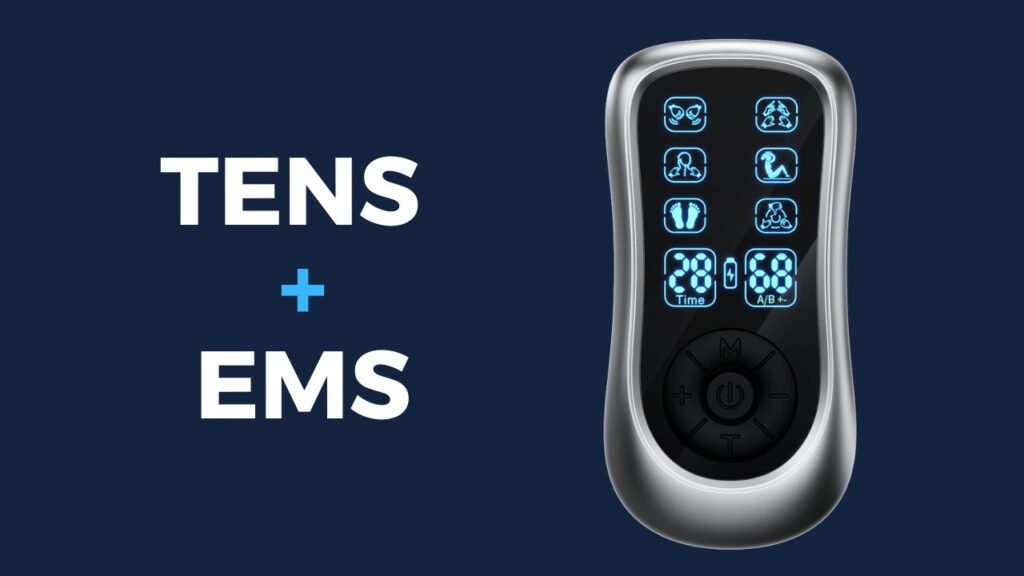
By combining TENS and EMS in a double-channel device, users have the flexibility to choose between pain relief or muscle stimulation, or even combine both treatments simultaneously. The intensity, frequency, and duration of the electrical impulses can typically be adjusted to suit individual preferences and treatment goals.
6 different modes to choose
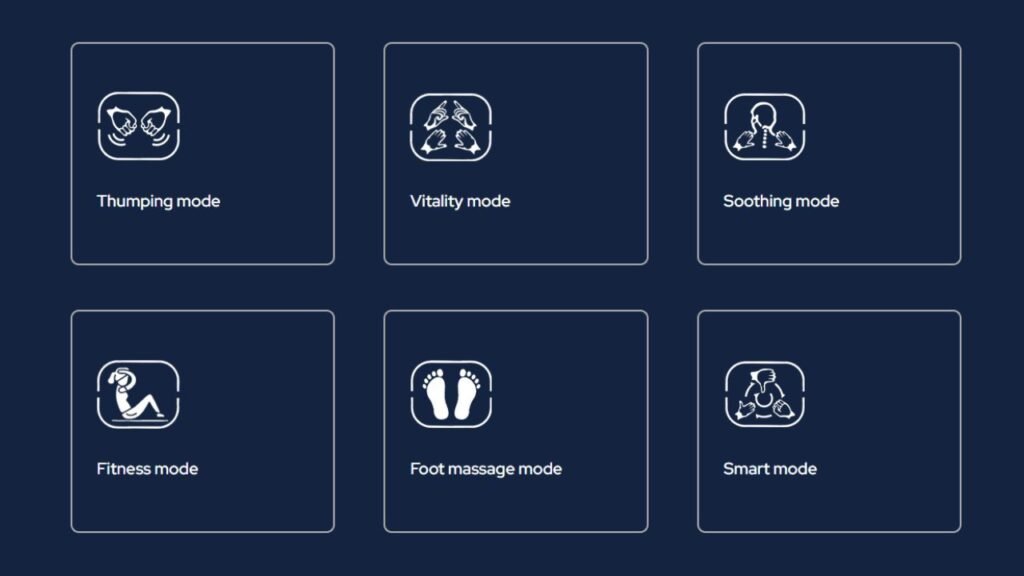
Thumping mode, Vitality mode, Soothing mode, Fitness mode, Foot massage mode and Smart mode.
1-19 levels of intensity can be adjusted
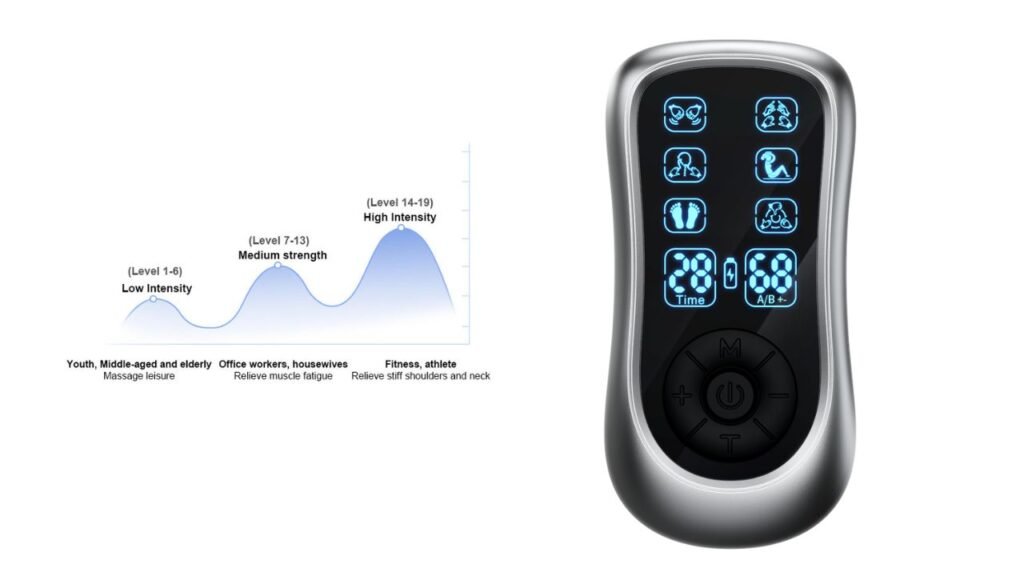
The M-802 TENS EMS combo unit has a wider range of intensity levels, 1 to 19. Higher intensity levels generally correspond to stronger and more noticeable sensations. The intensity adjustment of the M-802 physiotherapy machine is very sensitive and linear. The adjustment of intensity levels allows users to customize the treatment to their specific needs and sensitivity levels. It is important to start with a low intensity level and gradually increase it until a comfortable and effective level is reached.
Up to 8 electrode pads placement for whole body
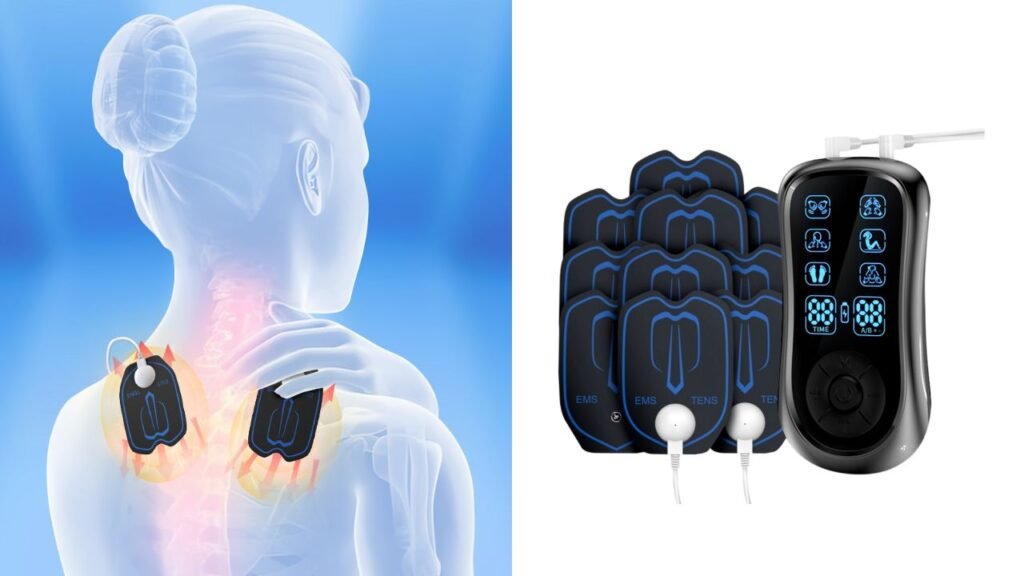
The unit usually comes with specific electrode pads or attachments that can be applied to different muscle groups or areas of the body, including but not limited to: Head, neck, shoulders, back, arms, palms, waist, buttocks, thighs, calves and feet, etc, Up to 8 electrode pads placement for whole body.
Portable
This TENS EMS combo unit is compact, measuring 13 x 6.5 x 1.5 cm, and weighs under 90 grams, making it incredibly portable. It features a USB Type-C charging interface, ensuring convenience whether you’re on the go, traveling, in the office, or at home – allowing you to use it anytime and anywhere.
